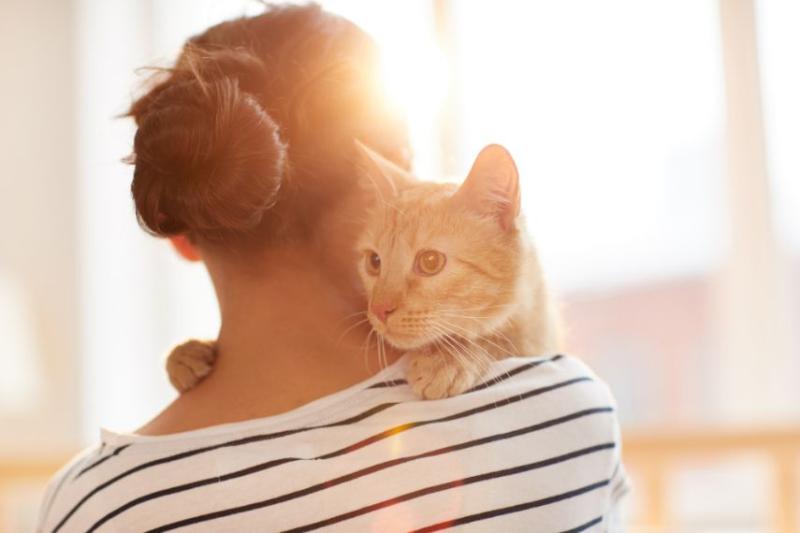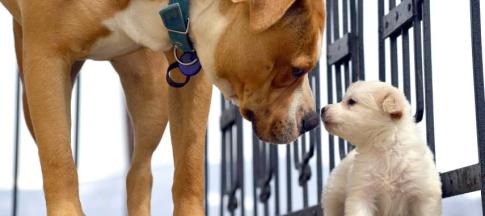
Have you ever wondered what your cat thinks and wished they could tell you?
Whilst some cats are more vocal than others, their non-verbal communication tells us the most about their mood - the way they hold their ears or tail, for example.
Check out our advice on how to read feline body language so you can try to understand your cat better.
Why should you ‘read’ your cat?
A cat will tell their owner how they feel about a situation, so it's important to try to understand and acknowledge these signs.
For example, if your cat is approached and stroked by a stranger, you should be able to tell if your pet is enjoying the attention, putting up with it, or is about to scratch or bite.
If your cat knows you’ll respond when they’re unhappy or frightened, they’ll learn to trust you, and you’ll develop a stronger bond.
Signs of a happy cat
A few ways you might be able to tell a cat is happy is:
- rolling on their back in front of you as a sign of greeting (but this may not mean they're offering their tummy to be touched, though)
- relaxed whiskers
- their body relaxing with an upright, sometimes curved tail when they see you
- a high tail which quivers when they see you
- their eyes being relaxed and half closed, rather than being wide or alert, and they blink slowly
- ears being in a natural position
- their mouth closes
Signs of an anxious cat
The most common causes of cat anxiety are conflicts with other cats or changes in their territory, like people moving furniture or the introduction of new, strong scents.
If your cat continues to show signs of anxiety without any obvious cause, chat to your vet, who can refer you to a feline behaviourist.
An anxious cat will usually:
- try to hide or be as inconspicuous as possible by keeping low to the ground
- crouch and get ready flee
- tense its muscles
- tuck its tail tightly into its body
- hold its whiskers forwards
- keep its ears flat against their head
- make their eyes wide and alert, rapidly blinking or closed
To learn more, read our article on how to treat a pet with anxiety.
Signs of a cat feeling threatened
A threatened cat will show similar body language to an anxious one.
It might:
- arch its back and straighten its legs to look bigger and more intimidating
- tense its tail and its hair may stand up
- point its whiskers forward towards the perceived threat
Signs of a depressed cat
Depression in cats can be a result of long-term stress, so if you don’t realise that your cat is stressed, it could become depressed later on.
A depressed cat might:
- sleep more than usual
- act lethargic
- droop its ears forward
- droop its whiskers
- look downwards
It’s worth consistently checking if your cat is happy indoors or needs some outside time. Read our indoor cat guide to learn more.
Signs of an aggressive cat
Aggression in cats usually comes from fear, anxiety, social pressures, frustration, illness or pain.
A cat will only attack a person if you ignore their body language.
Don’t try to stroke a cat if its:
- body posture and tail are stiff
- legs are straight
- body is thrashing or twitching
- ears are flat against the side of its head or rotated backwards
- eyes are wide with dilated pupils
- whiskers are stiff and held away from its face
If your cat shows signs of being aggressive regularly, get them checked over by your vet to rule out any illness or pain your pet might be experiencing.
If your vet can’t find a medical reason for your cat’s behaviour, they may suggest a referral to a feline behaviourist.
I’ve spent 20 years writing about pets and exploring the wonderful relationships they have with their owners. I started as a staff writer on Dogs Today magazine, working my way up to become deputy editor in 2008. In 2010, I left the office to pursue a freelance career, relocated to north Norfolk and started a family.
Over the years I’ve contributed thoughtful human-interest features, celebrity interviews and investigative news stories to publications including The Sunday Times, Dogs Today, Dogs Monthly and Your Cat. I’ve also ghost-written veterinary books and press releases for the pet industry.
When I’m not writing, I enjoy long walks in the Norfolk countryside with my rescue lurcher Popsie. These are always followed by tea and cake.




